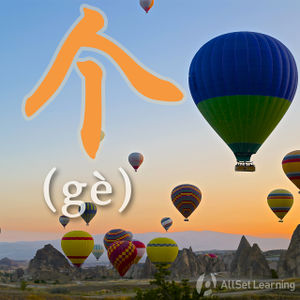Difference between revisions of "The filler word "neige""
m (Text replacement - "</span> <span class=" to "</span><span class=") |
m (Text replacement - ". </span>" to ".</span>") |
||
| Line 28: | Line 28: | ||
* 我 想 看看 你 买 的 <em>那个</em> ⋯⋯ <em>那个</em> ⋯⋯ iPhone。<span class="pinyin">Wǒ xiǎng kànkan nǐ mǎi de <em>nèige</em>... <em>nèige</em>... iPhone.</span><span class="trans">I'd like to take a look at your, ummm, you know... iPhone you bought.</span> | * 我 想 看看 你 买 的 <em>那个</em> ⋯⋯ <em>那个</em> ⋯⋯ iPhone。<span class="pinyin">Wǒ xiǎng kànkan nǐ mǎi de <em>nèige</em>... <em>nèige</em>... iPhone.</span><span class="trans">I'd like to take a look at your, ummm, you know... iPhone you bought.</span> | ||
* <em>那个</em> ⋯⋯ 我 要 去 开会 了。<span class="pinyin"><em>Nèige</em>... wǒ yào qù kāihuì le.</span><span class="trans">Ummm... I have to attend a meeting.</span> | * <em>那个</em> ⋯⋯ 我 要 去 开会 了。<span class="pinyin"><em>Nèige</em>... wǒ yào qù kāihuì le.</span><span class="trans">Ummm... I have to attend a meeting.</span> | ||
| − | * 昨天 <em>那个</em> ⋯⋯ <em>那个</em> ⋯⋯ 小笼包 真 好吃。<span class="pinyin">Zuótiān <em>nèige</em>... <em>nèige</em>... xiǎolóngbāo zhēn hǎochī. </span><span class="trans">Yesterday the, you know, steamed soup dumplings were so delicious.</span> | + | * 昨天 <em>那个</em> ⋯⋯ <em>那个</em> ⋯⋯ 小笼包 真 好吃。<span class="pinyin">Zuótiān <em>nèige</em>... <em>nèige</em>... xiǎolóngbāo zhēn hǎochī.</span><span class="trans">Yesterday the, you know, steamed soup dumplings were so delicious.</span> |
</div> | </div> | ||
Revision as of 04:11, 24 May 2017
In conversation, you may find yourself at a loss for words, unable to find the correct phrase you are looking for, or simply needing time to gather your thoughts. When you experience this feeling, in English, you may say "umm" or "uhhh" or another filler word. In Chinese, the word for this is 那个 (nèige). (The word 那个 can be pronounced both "nàge" and "nèige," but for this usage, "nèige" is normally used.)
Structure
In English, words like "ummm" and "uh" are used as filler[1] words when you're thinking about what to say. In Chinese, 那个 (nèige) is also used for this purpose. To English speakers not fortunate enough to be fluent in Mandarin this may raise an eyebrow because it can sound a bit "racist," but it's very common in Mandarin and you'll hear it quite often around Chinese speakers.
(那个⋯⋯) (那个⋯⋯) + [anything] + (那个⋯⋯)
那个 (nèige) can be inserted into sentences wherever you need to pause for thought.
Examples
- 那个 ⋯⋯ 我 不 跟 你们 一起 去 了,可以 吗?So, ummm... I won't go with you guys, OK?
- 我 想 吃 那个 ⋯⋯ 那个 ⋯⋯ 湖南 菜。I want to eat that... ummm, you know... Hunan cuisine.
- 那个 ⋯⋯ 我 明天 不 来 了。Ummm... I'm not coming tomorrow.
- 那个 ⋯⋯ 这样 做 不 好 吧?Ummm, it's not good to do it this way?
- 那个 ⋯⋯ 你 可以 做 我 的 女 朋友 吗?Like... could you be my girlfriend?
- 那个 ⋯⋯ 不好意思 , 我 要 走 了。Ummmm... sorry, but I've gotta go.
- 她 很 漂亮 , 就 像 那个 ⋯⋯ 明星 一样。She's very pretty, just like, you know, a celebrity.
- 我 想 看看 你 买 的 那个 ⋯⋯ 那个 ⋯⋯ iPhone。I'd like to take a look at your, ummm, you know... iPhone you bought.
- 那个 ⋯⋯ 我 要 去 开会 了。Ummm... I have to attend a meeting.
- 昨天 那个 ⋯⋯ 那个 ⋯⋯ 小笼包 真 好吃。Yesterday the, you know, steamed soup dumplings were so delicious.
References
- ↑ Filler (linguistics) on Wikipedia



